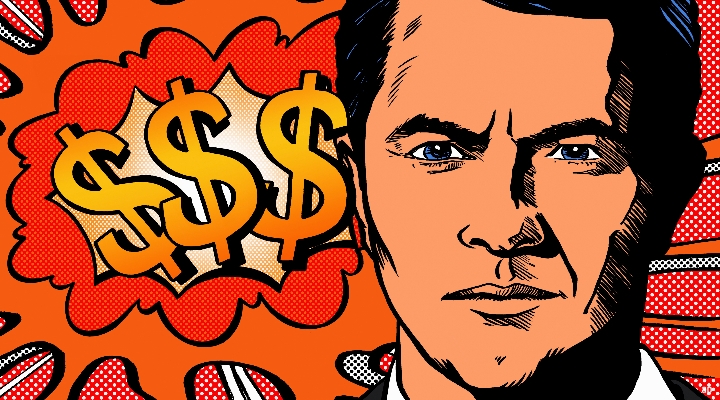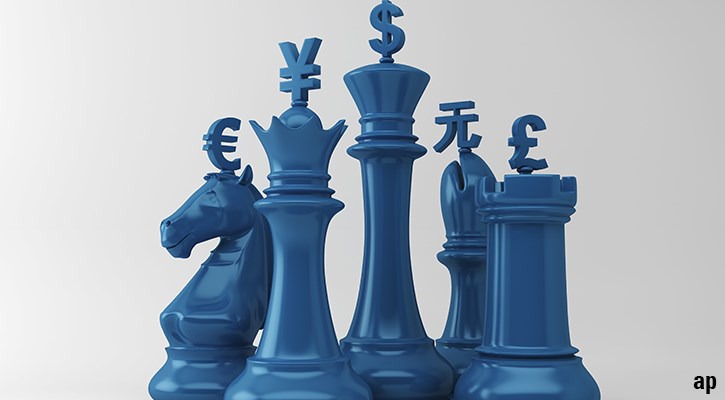
The US dollar has dialed back more than half of its increase since its last rise started in March 2021, when the US dollar currency index (DXY) stood at 90. Since then, it steadily moved up to a high of 114.2 at the end of September 2022. From there, it moved back to a recent low of 101.6 on 24 January.
That’s a -11% setback that other currencies have greatly benefited from. The Euro has strengthened by 12.9%, the British Pound, by 14.9%, and the Japanese Yen by 10.1%. The Canadian dollar is an outlier, having gained only 3.6%.
However, "the U.S. dollar is still at a historically high level," points out Thomas Torgerson, managing director and co-head of sovereign ratings at DBRS Morningstar.
What’s Driving the Fall in the Greenback?
The US Federal Reserve’s vigourous monetary tightening to fight inflation has been the main driver of the greenback’s rise, explains George Davis, chief technical analyst, fixed income and currencies, at RBC Capital Markets.
Another contributing factor was the invasion of Ukraine and the general weakness of Europe’s economies, which provoked a flight to the safety of the USD. The rise of the currency started right after the invasion, one year before the Fed started raising rates.
The fact that the Bank of Canada adopted as aggressive a stance on rates as the Fed explains why the loonie is not benefiting as much as other currencies, explains Davis. During the USD’s rise, "the CAD has depreciated, but not as much as the euro, pound or yen," he says. Now, the throttle has reversed.
"With inflation dialing back and the Fed coming near the end of its rate increases, the US dollar is sliding back," says Pascal Bédard, economist and full-time instructor at HEC Montreal.
Another factor is at the same time pressing down on the USD, notes Torgerson: "the energy shock that hit Europe is not that favourable to the US, he says, which is an exporter of gas. Prices have begun to come down, and they’re contributing a downdraft on the USD."
Other Central Banks Are Also Hiking Rates
While the Fed is easing its rate policy, the European Central Bank has kicked off its rate increases while the Bank of Japan has also made very modest moves in that direction. "Now the timing of currencies is relayed to other central banks," observes Bédard. In Europe, "it’s favouring the euro against the USD in spite of the Ukraine effect," he adds.
Will the USD’s decline continue? "The relative rate expectations have shifted against the dollar, notes Torgerson, but maybe that could not persist." Bédard thinks the decline is reaching its end, the USD ultimately settling between 95 and 100 on the DXY scale.
One development could reverse the present movement of currencies. "If inflation remains or even increases again, it could cause the Fed to hike rates again and prompt the USD to strengthen again," says Davis. But that remains to be seen.
Who Wins?
"The general effect of a weakening dollar is generally stimulating for the world," says Bédard. In emerging countries, debts labelled in USDs are easier to pay back, which is favourable to many countries’ finances – "even the US!” Bédard points out.
"Some countries will benefit quite a bit, Davis believes, Mexico for one. You can see it in the peso: it’s been quite resilient since the second half of July. The main effect, not only on emerging markets but for all countries, including the US, will be a boost to trade. Fruits prices from both Mexico and the US "will be lower and vacations will be cheaper," he adds.
But not that much. Compared to most countries, the effects of a lower USD on Canada are dampened because the loonie has moved relatively little in relation to it. "There could be some risk for those already holding assets in Europe and in South East Asia," Davis believes. Strengthening currencies could outperform the loonie and eat into profits.
But the effect remains positive for investors willing to move assets outside Canada. "The USD is always important for investors," Bédard says. Its depreciation means that the world economy will most likely improve and that could prompt investments to move toward foreign markets, including the US, because the currency risk will stabilise.”




























